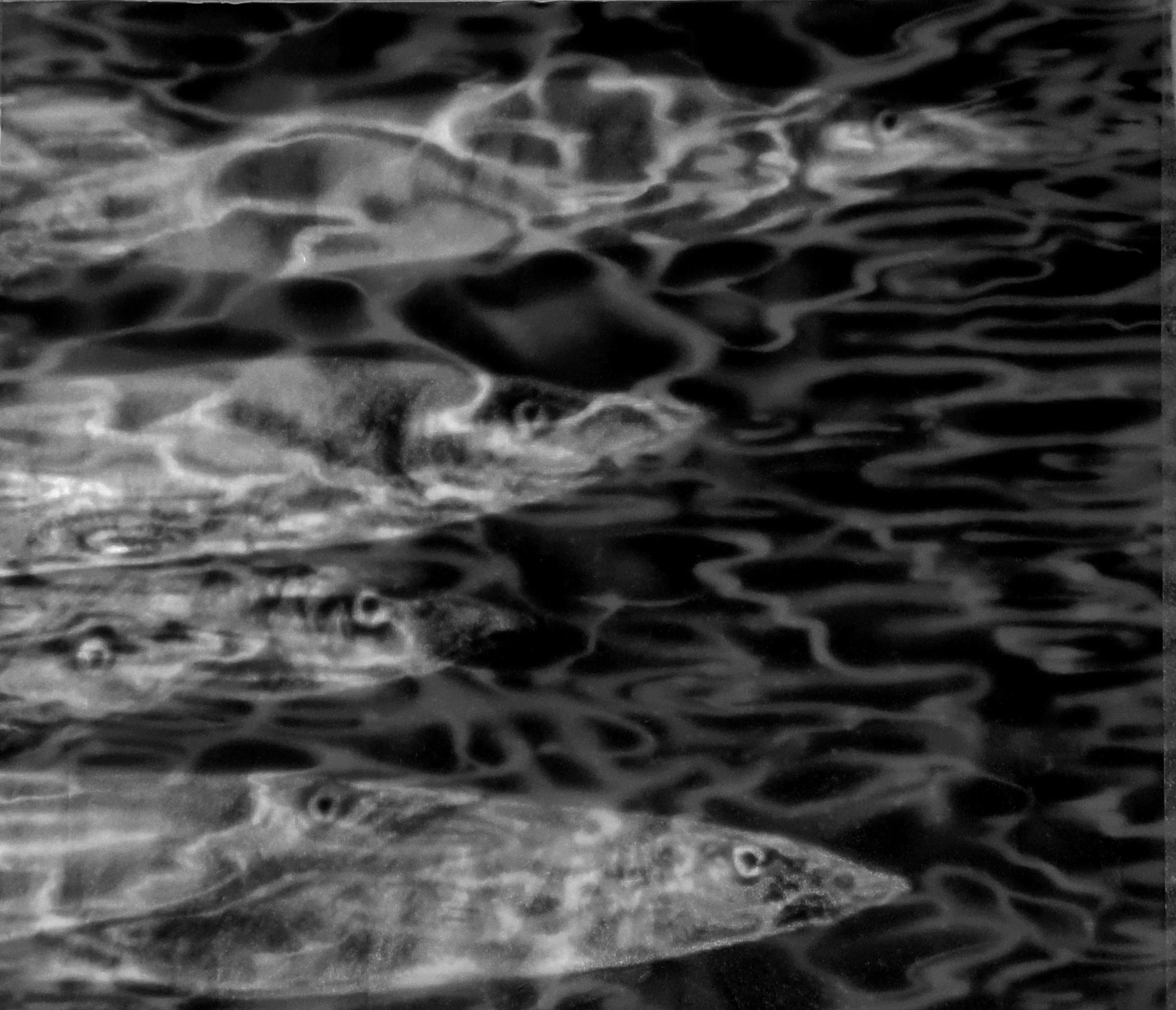Anchovy (a)
As a publicly accessible project, we aimed to create work that would engage a broad audience, producing memorable, publicly acceptable work that would foster maximum engagement. Our overarching aim was to enhance public awareness of and foster participation by promoting the beauty of Anchovies in support of the project's environmental message. Our response seeks to be accessible to all viewers as possible by embracing an uncomplicated, pleasing aesthetic.
“Seeing it from various angles the reflective metallics come to life”
We produced an acrylic painting (Anchovy 1) on canvas using metallic paint – with a view to exhibiting the work under low light positioned somewhere people are moving around or seeing it from various angles so that the reflective metallics come to life.
Because the painting does not replicate well in digital photographs, we developed the work further, resulting in Anchovy II - created by projecting an image of Anchovy 1 on a dappled water pattern to obtain a digital image.
As part of my experimental work for our Anchovy response, I produced a painting on Barracuda fish to test colour, paint effects and composition.
Barracuda II was produced by projecting an image of Barracuda 1 onto a dappled water pattern to create a black and white digital photograph to represent the ghosts of fishes that are no longer in our Oceans due to the degradation of their environment.
Artist: Fiona Smeaton and Oliver Smeaton
A mother and son collaboration
Fish Profile
European Anchovy - Engraulis encrasicolus
Conservation status
Anchovies are all wild caught. Their numbers are in decline due to climate change and poor fishing practices. The Bay of Biscay is considered the best source by the Marine Conservation Society (MCS), with fishing in areas such as the Gulf of Cadiz and southern coast of Portugal being a cause for concern and contributing to their reduced numbers.




